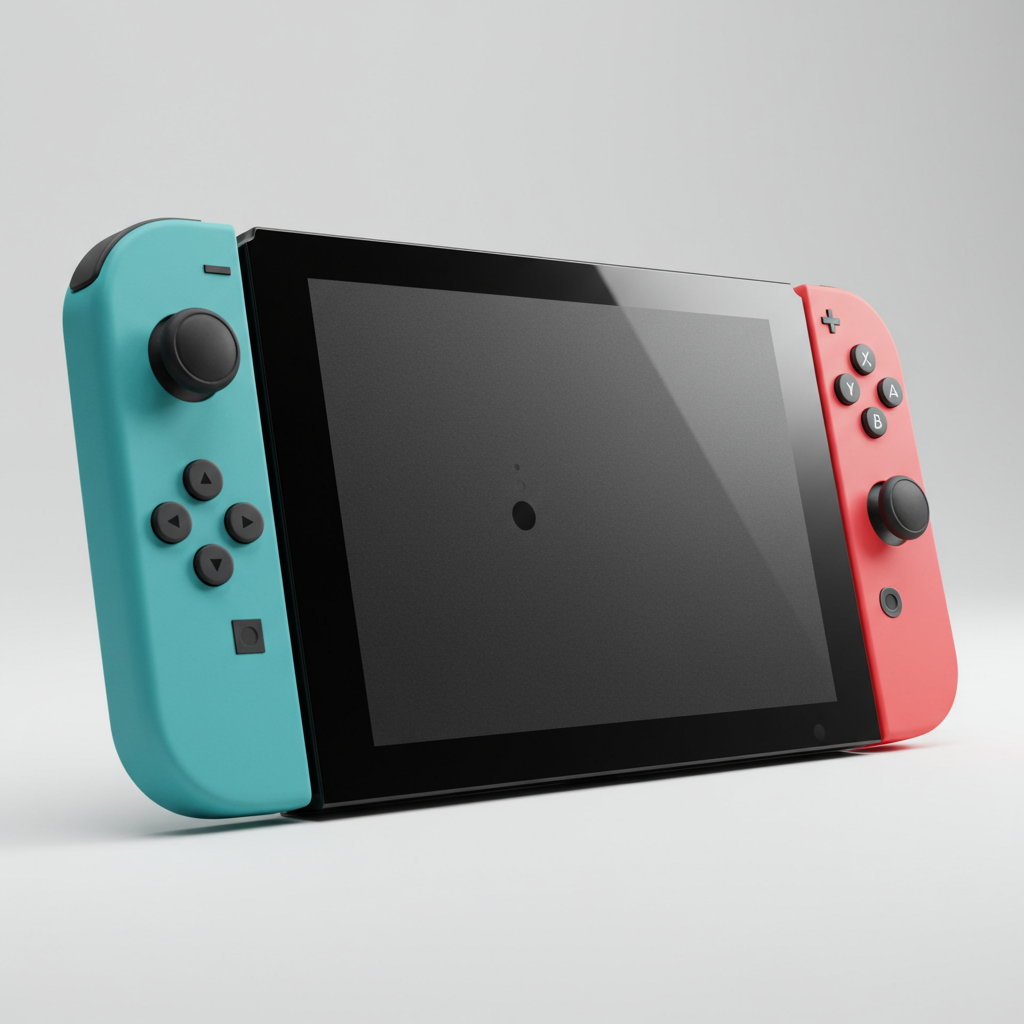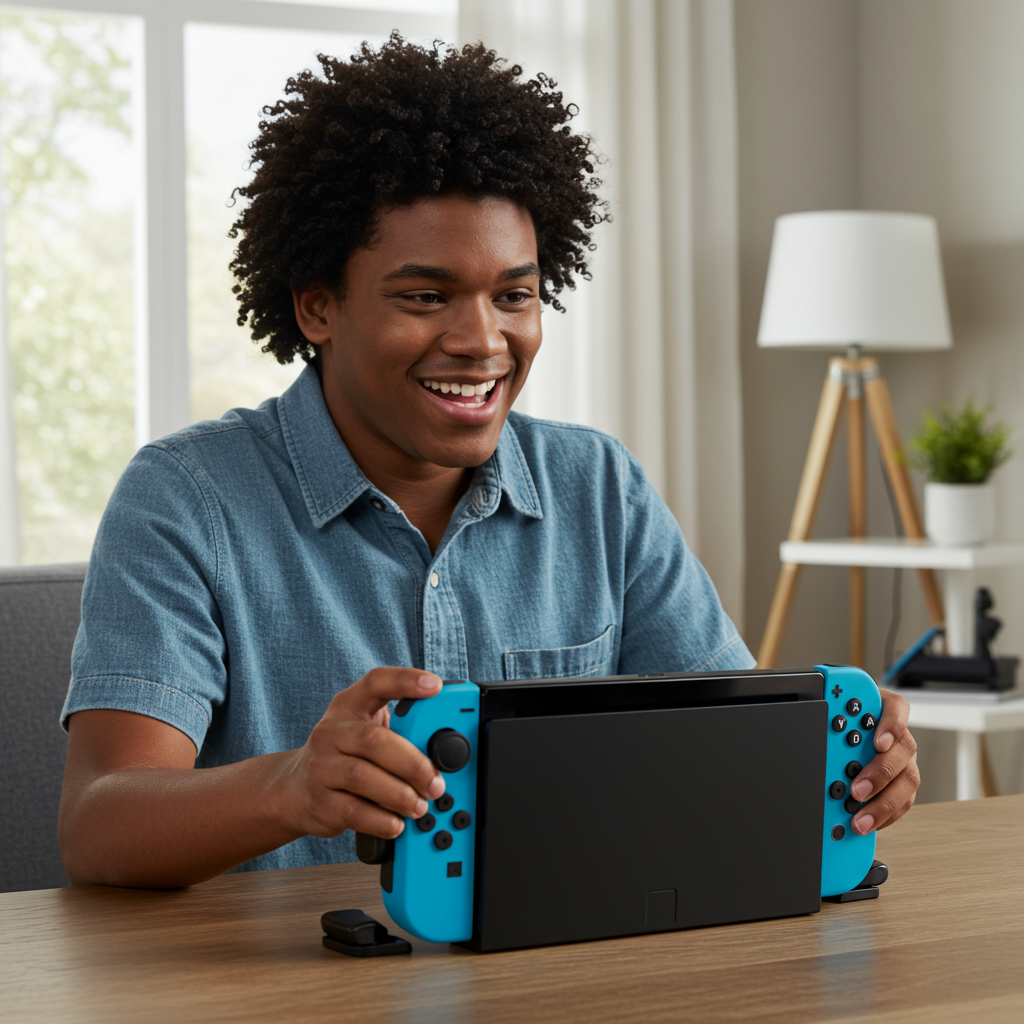After revolutionizing the gaming landscape with the original Switch, Nintendo returns with a refined successor. The new Nintendo Switch 2 isn’t a radical departure or a generational leap in the vein of past console transitions; instead, it’s a welcome evolution that wisely builds upon the incredibly successful formula. Think of it less as a “Super Nintendo Switch” and more as a highly polished “Switch Pro.”
Nintendo’s strategy seems clear: stick with what works and make it better. And after spending time with the Switch 2, it’s evident that this approach—delivering a console that is “exactly good enough”—might just be precisely what was needed to carry the hybrid platform into the next era.
A More Refined Handheld & Docked Experience
At its heart, the Switch 2 retains the core concept: a versatile tablet seamlessly transitioning between handheld and docked modes. Yet, nearly every aspect has been enhanced.
The most immediate change is the size. The Switch 2 boasts a larger 7.9-inch LCD display, a notable increase from the original Switch’s 6.2 inches. This expanded screen real estate makes text-heavy games far more comfortable to play. While it adds slightly to the device’s weight (now around 1.18 pounds with controllers), the larger footprint feels manageable for adult hands. The handheld screen also sees a significant technical bump, offering a sharp 1920 x 1080 resolution with support for HDR10 and a smooth 120Hz variable refresh rate (VRR). Games look crisper and run smoother than ever before in portable mode. However, for those accustomed to the vibrant, contrast-rich OLED panel of the latest original Switch model, the return to LCD might feel like a step back in pure display quality, lacking the same deep blacks.
Docked play finally delivers on a long-requested feature: 4K output with HDR10 support. While not every game will render natively at 4K, the ability to upscale and output at this resolution makes a noticeable difference on compatible TVs, leading to significantly crisper visuals for supported titles.
Beyond the screen, other thoughtful hardware upgrades enhance usability. The kickstand is now much sturdier and offers a wide range of angles, a vast improvement over the original’s flimsy design, making tabletop mode genuinely practical. A second USB-C port has been added to the top, offering more flexible charging options and enabling connections for accessories like webcams for the new social features.
Under the Hood: More Power, New Tech
The increased size and capability are thanks to a new custom Nvidia Tegra T239 chip. This updated processor brings modern gaming tech like DLSS (Deep Learning Super Sampling) and ray tracing to Nintendo’s hybrid console. Paired with a boost to 12GB of LPDDR5X RAM and faster 256GB UFS internal storage, the Switch 2 is a significantly more capable machine than its predecessor.
This newfound power enables demanding games like Cyberpunk 2077 and Hitman: World of Assassination to run, which were technically out of reach for the original Switch. Digital Foundry’s analysis of Cyberpunk 2077 is particularly revealing, showing the Switch 2 port intelligently leveraging DLSS and its 9GB of usable RAM to deliver texture quality comparable to a PS5. While its raw horsepower doesn’t match high-end PC handhelds or current-gen consoles like the PS5 or Xbox Series X, it impressively holds its own, particularly in terms of image quality (surpassing PS4 TAA and competing with Series S in some areas like SSR cleanup) and load times (much faster than PS4 due to UFS storage).
However, this power comes with trade-offs. The internal 256GB storage, while larger, can fill up quickly with modern game sizes (Cyberpunk 2077 alone is 59GB). Expanding storage requires expensive, hard-to-find microSD Express cards, as older microSD cards are incompatible. More significantly, battery life appears worse than the original Switch, often hitting the lower end of Nintendo’s estimated 2-6.5 hours, especially when playing graphically intensive games like Cyberpunk.
Joy-Cons: Better, But Still a Lingering Concern
The iconic Joy-Con controllers return with subtle but meaningful refinements. They are slightly larger, feeling more comfortable for many adult hands, and feature a sleeker matte finish. The analog sticks have improved travel and responsiveness, though the long-term issue of Joy-Con drift remains a concern as they still don’t use Hall Effect sensors, despite third-party options offering this technology.
A major design improvement is the new magnetic attachment system. This eliminates the slight wiggle of the old rail system and provides a satisfying, secure connection. A release lever prevents accidental detachment. They also offer more subtle vibrations.
Beyond basic controls, the Joy-Cons introduce two genuinely new features:
GameChat: A dedicated button on the right Joy-Con integrates voice and video chat directly into the user experience. This is a huge step up from the original’s reliance on a clunky mobile app. While voice clarity is good and it supports webcams (including Nintendo’s and some third-party), the screensharing feature is currently choppy.
Mouse Mode: Turning a Joy-Con on its side enables a unique mouse-like control scheme. Tested effectively with strategy games like Civilization VII, it offers surprisingly precise control for certain genres and seamlessly switches on the fly. However, comfort for extended use can be an issue.
One potential user experience quirk highlighted by early impressions is the “virtual game cards” system for digital games. Users need to “load” digitally owned titles onto a specific console, which can be mildly inconvenient for a single user but potentially “nightmarish” in multi-Switch households, despite a temporary “loan” feature.
The Games: A Blend of Old and New
Ultimately, a console is defined by its games, and the Switch 2 launches with a diverse library that showcases its capabilities.
The standout launch title is arguably Mario Kart World. Expanding the series into a large, connected open world with up to 24 racers, it’s a technical showpiece that runs remarkably well on the Switch 2, maintaining smooth frame rates even in chaotic split-screen multiplayer. While the first-party lineup beyond Mario Kart is somewhat thin at launch (with a new Donkey Kong game due later), the console shines with demanding third-party ports like Cyberpunk 277, Street Fighter 6, and Yakuza 0 Director’s Cut. These titles look and run significantly better than would have been possible on the original Switch, offering a portable experience previously reserved for more powerful PC handhelds.
Perhaps more impactful for existing owners are the numerous updated games. Paid upgrades ($10) for titles like Breath of the Wild and Tears of the Kingdom offer smoother performance and drastically faster loading times, making revisiting Hyrule a joy. Free updates for games like Fortnite and No Man’s Sky transform them into experiences that feel genuinely modern on the Switch 2, overcoming the original Switch’s performance struggles.
Adding further value, Nintendo Switch Online subscribers gain access to GameCube games, starting with classics like The Legend of Zelda: The Wind Waker and Soulcalibur II. This classic library is expected to grow, offering a nostalgic bonus. The GameShare feature, allowing local multiplayer with a single game copy (with some visual quality compromises on the streamed device), is also a fun addition for co-op.
Position in the Market & Value Proposition
Eight years after the original Switch carved out its unique niche, the Switch 2 enters a market with more portable competition than ever before, including capable PC handhelds like the Steam Deck and Asus ROG Ally. Compared to these devices, the Switch 2 doesn’t compete on raw power or access to vast PC game libraries.
However, Nintendo continues to operate largely in its own sphere. The Switch 2 offers a curated, user-friendly experience focused on seamless portability and the platform’s unique strength: exclusive first-party games. While the $450 price tag is hefty and comparable to current-gen consoles or even some PC handhelds (especially considering additional costs like controllers, online subscriptions, and required expensive storage upgrades), the appeal of playing the latest Mario, Zelda, Pokémon, and other Nintendo titles on this refined hybrid device remains incredibly strong.
For those who missed the original Switch entirely, the Switch 2 is an easy recommendation – it represents the current pinnacle of Nintendo’s hybrid concept. For existing Switch owners, the decision is more nuanced. While not a “must-have” revolution, the cumulative improvements – the larger, better display, more powerful hardware enabling demanding ports and enhanced existing games, improved Joy-Cons (magnets!), and useful new features like GameChat and GameShare – make it a compelling upgrade if budget allows.
The Verdict
The Nintendo Switch 2 is a smart, deliberate evolution of a beloved console. It addresses many of the original’s shortcomings while retaining the core design and functionality that made it a phenomenon. While it may not wow with a dramatic generational leap or compete directly on specs with the most powerful handhelds, its significant hardware upgrades, useful new features, and the promise of experiencing Nintendo’s unparalleled game library on a more capable machine make it a powerful proposition. In the world of Nintendo, perhaps being “more than good enough” is precisely the formula for continued success.




